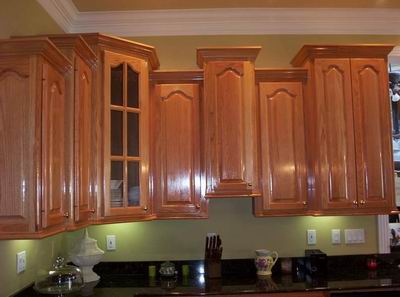Question
Currently I paint my built-in furniture with an oil-based paint to match existing trim in houses. I am receiving more and more requests for desk surfaces that stand up to everyday office/computer use. In short, I need to come up with a surface over my painted desk tops that is considerably harder than paint. Can I spray on lacquer, polyurethane, varnish or anything else that will not discolor my paint and give an adequate surface?
Forum Responses
If you have the appropriate spray setup and are familiar with spraying lacquers I would opt with the catalyzed conversion varnish. ML Campbells Resistant is a pigmented varnish that can be tinted to numerous colors and is tough as nails. That would be one of your best choices. Another alternative with less durability would be spraying a waterborne pigmented finish and then topcoating it with a waterborne clear.
I would avoid placement of glass on a flat surface such as a desk. You could end up with another problem--liability.
